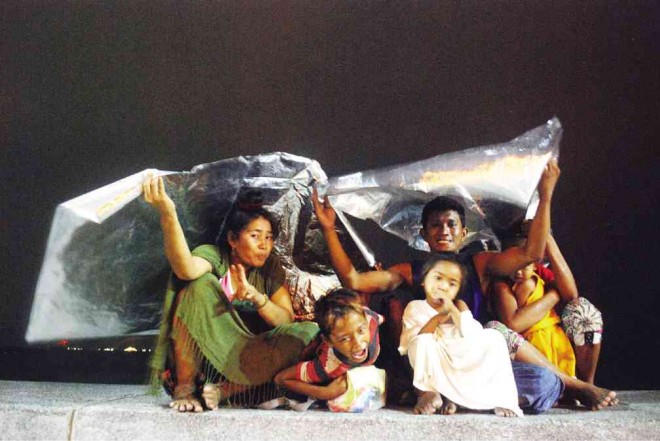
A pending bill seeks to implement a comprehensive program to uplift the condition of homeless children in big cities nationwide. ARNOLD ALMACEN
MANILA, Philippines–Two lawmakers from Mindanao are pushing for the creation of crisis centers for street children in Metro Manila, as well as all other big cities around the country.
Cagayan de Oro Rep. Rufus Rodriguez and his brother Maximo Rodriguez of Abante Mindanao have filed House Bill No. 1440 seeking the establishment of facilities to house, feed and teach children roaming the streets in urban centers.
“National and local government agencies, along with nongovernment organizations, work hand in hand to uplift the situation of Filipino street children. But there are numerous needs that have yet to be met,” the lawmakers said in an explanatory note.
Filed two years ago, HB 1440 provides for the formulation of a comprehensive program that will give various forms of assistance to street children such as temporary shelter, emergency medical and feeding, and basic education.
Crisis centers shall be managed by the Department of Social Welfare and Development in close consultation with local government units.
“This proposed law will help provide street children the means to uplift their conditions and take them out of the streets through programs that will equip them with livelihood, technical and social skills, among others,” the Rodriguezes said.
The centers will be established in all cities and municipalities in the National Capital Region and in every highly urbanized city in the Philippines, according to the proposal.
“The rights and welfare of Filipino children are governed by several existing laws and policies on children but there is no specific law that addresses the special conditions and needs of the street children,” the lawmakers said.
These existing policies are contained in Republic Act No. 7610, or the child abuse law; Republic Act No. 9231, which bans the employment of children in dangerous places; and Presidential Decree 603, or the Child and Youth Welfare Code.
In 2000, the Council for the Welfare of Children reported that there were some 45,000 street kids nationwide, a figure presumed to have risen many times over since then.
Of that number, 75 percent of the children were known to stay on the streets most of the time, while 20 percent practically lived on the streets alone or with their families or friends. The rest had experienced abuse or had been abandoned and were engaged in illegal activities.
“That was 15 years ago. What about today? We are all witness to the pitiful situations of street children roaming aimlessly, seeking alms for food along hazardous streets and highways,” the Rodriguez brothers said.